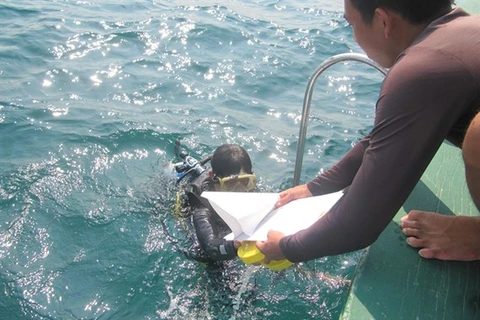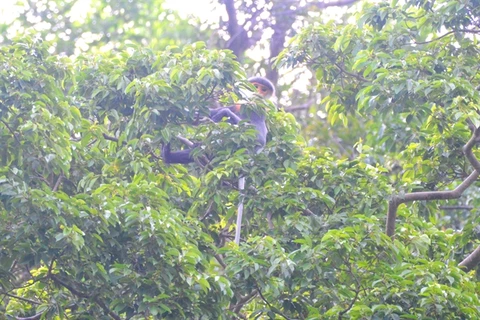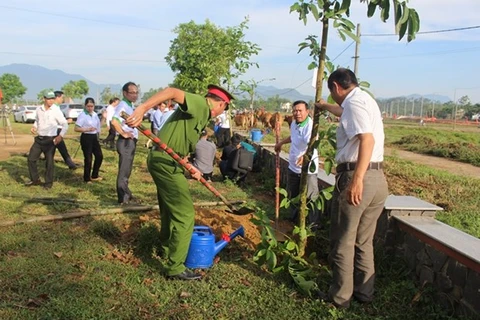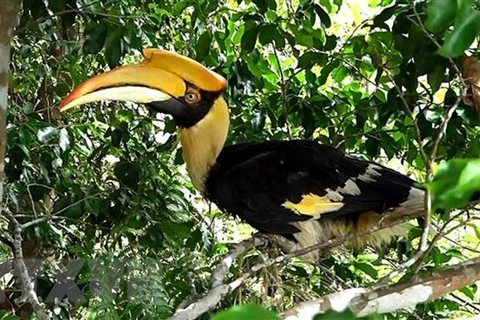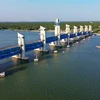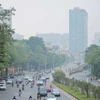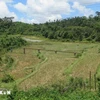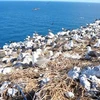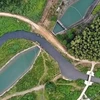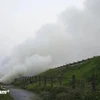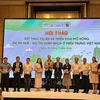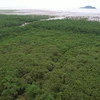Hanoi (VNA) - Experts have suggested adding biodiversity compensation into the draft Law on Environment Protection.
Biodiversity is essential to the environment. However, regulations on landscape impact assessment and method of forecasting biodiversity loss remain vague. In several cases, many natural landmarks have been destroyed due to the lack of project assessments on impact on natural landscapes.
Therefore, regulations on biodiversity compensation are expected to offset the lost values of nature caused by projects as well as control activities to earn economic benefits at the expense of the environment.
“Missing” points in law
During a discussion session on policies in the draft revised Law on Environment Protection held on June 8, deputy head of the Vietnam Environment Administration (VEA)’s Nature and Biodiversity Conservation Agency (BCA) Hoang Thi Thanh Nhan said there has not been any specific assessment of landscape characteristics to serve the outlining of suitable conservation and management strategy.
The Central Highlands is now home to over 3.3 million ha of natural forests and forestry land. Nearly 6,000ha of natural forests are lost on average each year, resulting in persisting dry conditions.
Additionally, landscape fragmentation also affects the function and biodiversity of landscapes. In Vietnam, forest fragmentation is a popular phenomenon in regions. For example, along the Truong Son mountain range, the natural forests here have degraded and been fragmented seriously over the past decades, affecting the ability to regulate floods and droughts, leaving many rare and endemic species being threatened.
Even at natural heritage sites with significant value, like Ha Long Bay, Phong Nha – Ke Bang National Park and global geological parks, there are landscape destruction activities.
It is worth noting that many natural landscapes, after being broken, will be unable to restore the original conditions, leading to degradation in biodiversity-ecosystem and damage to socio-economic and cultural development, especially for tourism activities and preservation of biodiversity values.
Meanwhile, regulations on the assessment of biodiversity impact remain unspecific. Environment protection solutions in the environmental impact assessment report mostly focus on waste treatment and waste mitigation, rather than paying attention to the protection of landscapes and biodiversity.
Nhan said landscape protection regulations have been prescribed in the Law on Biodiversity 2008, the Law on Cultural Heritage 2013, and the Law on Environment Protection 2014. However, the landscape is being understood in different aspects and not yet regulated.
Several nations have issued their own laws on landscape protection and management such as Germany, Japan, and the Republic of Korea. The issue has also been mentioned in conventions such as the European Landscape Convention and guidelines of the International Union for Conservation of Nature, among others.
Good economic plan
Considering the above shortcomings, a representative from the VEA said the draft amended Law on Environment Protection supplements regulations on the impact assessment of important natural landscapes, and control of the adverse impact of socio-economic development projects on natural landscapes via the system of environment impact assessment reports.
Accordingly, the project owner with biodiversity reduction impact is responsible for assessing biodiversity of the affected area, forecasting the extent of biodiversity loss (if any) caused by the project, and proposing a biodiversity compensation plan.
A biodiversity compensation plan must meet basic requirements, such as the biodiversity which is being compensated for being more than or equal to the reduced one, prioritising compensation in the affected area. If it can’t be done on the spot, an investor could propose another suitable area in line with the law.
A BCA representative said many countries like the US, Australia, Brazil, Colombia, South Africa, the Netherlands, and Sweden have established or developed compensation policies to protect species and ecosystems.
Via compensation mechanisms, biodiversity will be maintained, thus keeping the ecological balance in the human development process, contributing to the sustainable development, Nhan said.
Sharing the view, former Director of the Institute of Ecology and Biological Resources Le Xuan Canh said Vietnam just piloted biodiversity compensation in Ba Ria-Vung Tau and Kien Giang provinces. Kien Giang successfully offered compensation, returning what has been lost to nature.
If biodiversity compensation is added into the draft revised Law on Environment Protection, it will be a good economic plan, Canh said./.


